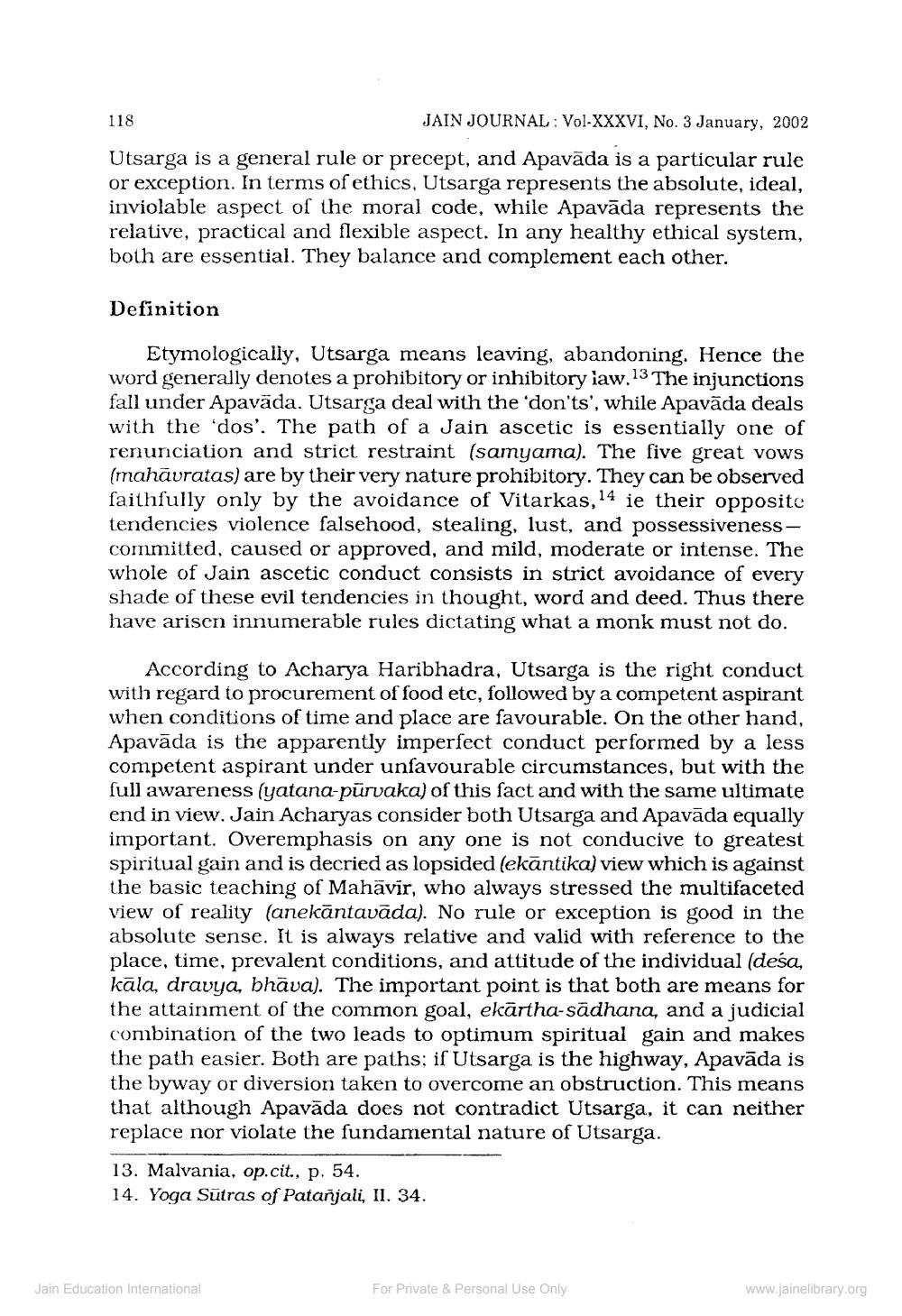________________
JAIN JOURNAL: Vol-XXXVI, No. 3 January, 2002
Utsarga is a general rule or precept, and Apavāda is a particular rule or exception. In terms of ethics, Utsarga represents the absolute, ideal, inviolable aspect of the moral code, while Apavāda represents the relative, practical and flexible aspect. In any healthy ethical system, both are essential. They balance and complement each other.
118
Definition
Etymologically, Utsarga means leaving, abandoning. Hence the word generally denotes a prohibitory or inhibitory law. 13 The injunctions fall under Apavāda. Utsarga deal with the 'don'ts', while Apavāda deals with the 'dos'. The path of a Jain ascetic is essentially one of renunciation and strict restraint (samyama). The five great vows (mahāvratas) are by their very nature prohibitory. They can be observed faithfully only by the avoidance of Vitarkas, 14 ie their opposite tendencies violence falsehood, stealing, lust, and possessivenesscommitted, caused or approved, and mild, moderate or intense. The whole of Jain ascetic conduct consists in strict avoidance of every shade of these evil tendencies in thought, word and deed. Thus there have arisen innumerable rules dictating what a monk must not do.
According to Acharya Haribhadra, Utsarga is the right conduct. with regard to procurement of food etc, followed by a competent aspirant when conditions of time and place are favourable. On the other hand, Apavada is the apparently imperfect conduct performed by a less competent aspirant under unfavourable circumstances, but with the full awareness (yatana-pūrvaka) of this fact and with the same ultimate end in view. Jain Acharyas consider both Utsarga and Apavada equally important. Overemphasis on any one is not conducive to greatest spiritual gain and is decried as lopsided (ekāntika) view which is against the basic teaching of Mahavir, who always stressed the multifaceted view of reality (anekāntavāda). No rule or exception is good in the absolute sense. It is always relative and valid with reference to the place, time, prevalent conditions, and attitude of the individual (desa, kāla, dravya, bhava). The important point is that both are means for the attainment of the common goal, ekārtha-sādhana, and a judicial combination of the two leads to optimum spiritual gain and makes the path easier. Both are paths; if Utsarga is the highway, Apavāda is the byway or diversion taken to overcome an obstruction. This means that although Apavāda does not contradict Utsarga, it can neither replace nor violate the fundamental nature of Utsarga.
13. Malvania, op. cit., p. 54.
14. Yoga Sutras of Patanjali, II. 34.
Jain Education International
For Private & Personal Use Only
www.jainelibrary.org




